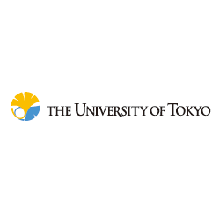INFLUENCE OF STRATEGIC CAPABILITIES ON COMPETITIVE ADVANTAGE OF MICROFINANCE INSTITUTIONS IN NAIROBI COUNTY, KENYA
INFLUENCE OF STRATEGIC CAPABILITIES ON COMPETITIVE ADVANTAGE OF MICROFINANCE INSTITUTIONS IN NAIROBI COUNTY, KENYA
Godfrey Mohoria Menganyi - Masters Student, Master of Business Administration, St. Paul’s University, Kenya
Robert Abayo - Lecturer, Department of Business, St. Paul’s University, Kenya
Charity Muraguri - Lecturer, United States International University – Africa, Kenya
ABSTRACT
Microfinance Institutions services have continued to play an important role in Kenyan economy. Microfinance Institutions in Kenya have gained wide recognition since 1990’s for the role they play in providing financial services to the low-income households, and their contribution to poverty alleviation. While achieving this poverty reduction goal, MFIs should also be financially sustainable. The issue of sustainability of MFIs has attracted the attention of many researchers and academicians on how MFIs can fulfill their social obligations and remain sustainable. The research assessed the influence strategic capabilities on competitive advantage of microfinance in Nairobi County, Kenya. The research was guided by Resource Based View, Ansoff Market Development Model and Dynamic Capabilities Theory. The study employed descriptive research design. The target population for this study was microfinance Banks and Credit only Micro Finance Institutions in Nairobi, Kenya that are members of the Association of Microfinance Institutions hence 32 MFIs. The study relied on primary and secondary data. Primary data was collected using semi – structured questionnaires with both open and closed ended. Secondary data was collected from published sources. Pretesting of research tools was used to test reliability and validity of the questionnaires. All 128 sampled employees of microfinance institutions in Nairobi, Kenya that are members of the Association of Microfinance Institutions (AMFI) were included in the study. Only 117 of the 128 questionnaires were filled out and returned by the respondents. A 91.41 percent favorable response rate was achieved. Data was cleaned, coded, edited, classified and analyzed using Statistical Package for Social Science. The descriptive statistics tools used were mean, standard deviation, mode and variance to analyze quantitative data. The study determined the manifestation of competitive advantage in the Microfinance Institutions of Kenya (MFI) under study. The average statements regarding the competitive advantage of the studied, MFI are 3.0442 implying that surveyed Microfinance Institutions of Kenya (MFI) perform on average scale. Each firm desire is to perform and meet its objectives and goals and therefore competitive advantage aspects are to be met in order for the firm to remain in continuity and gain competitiveness.









